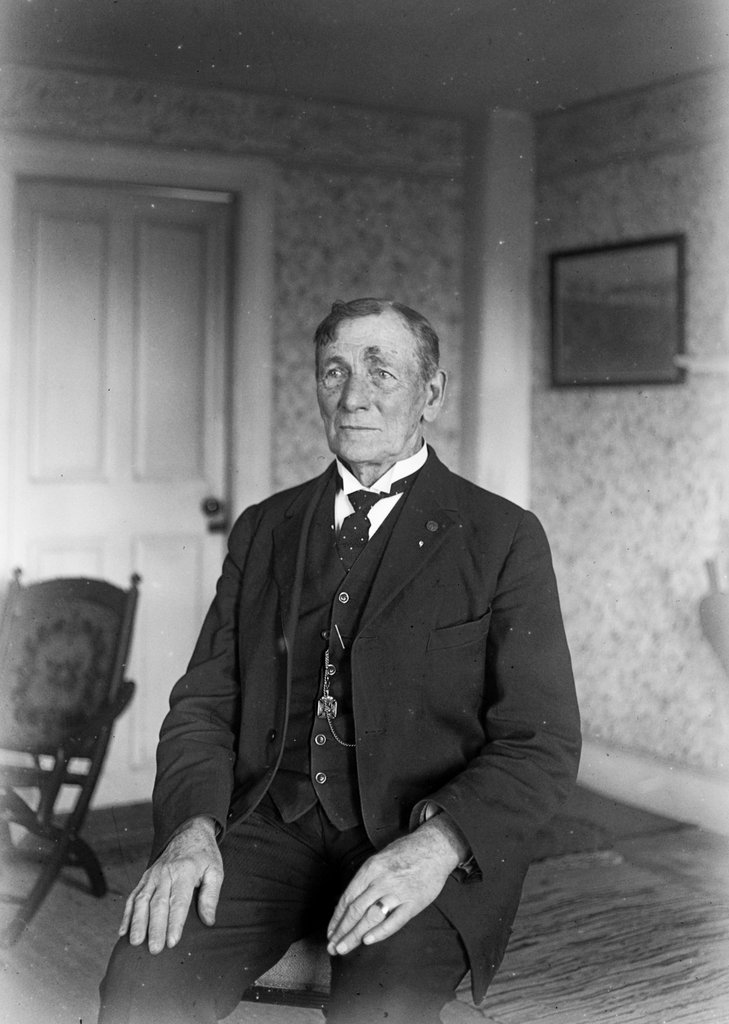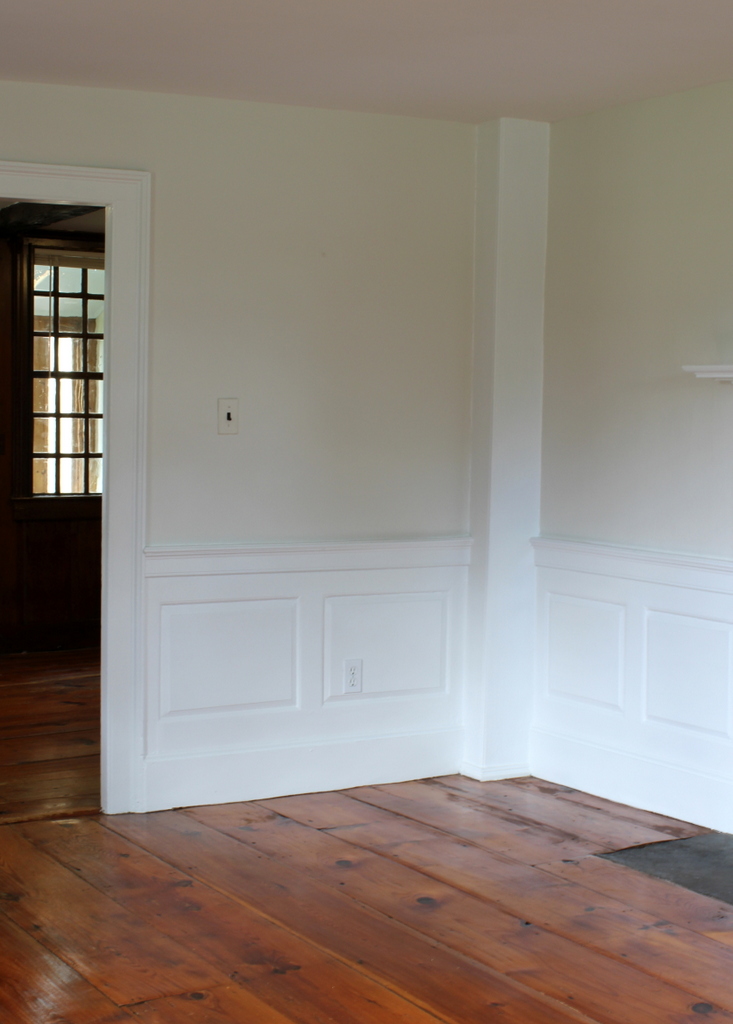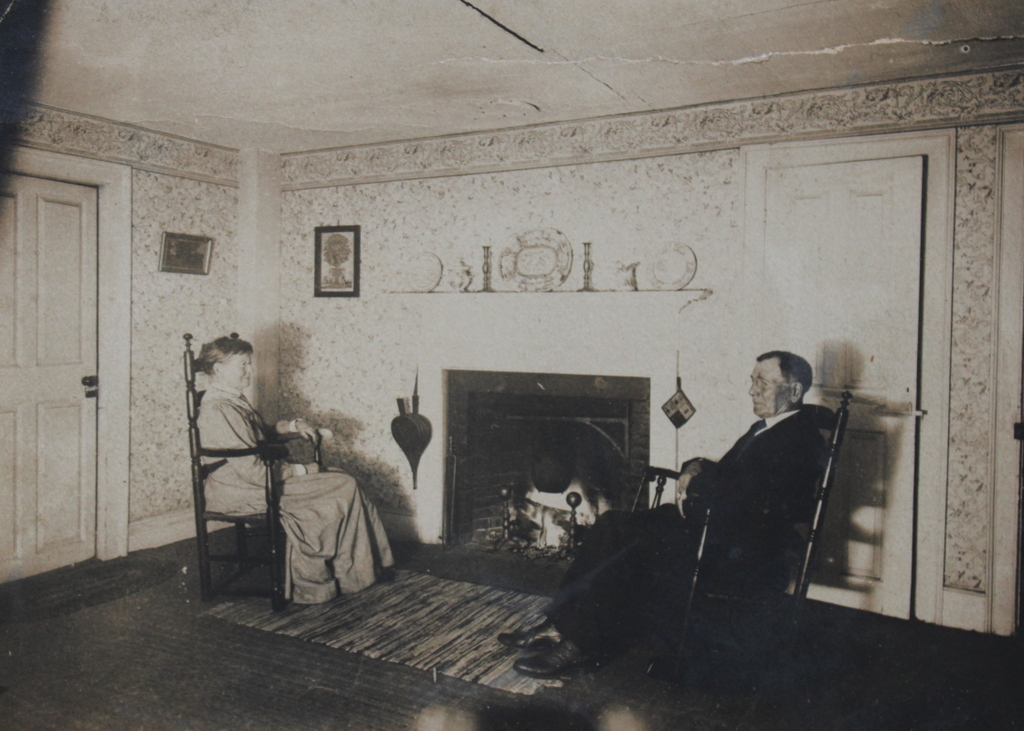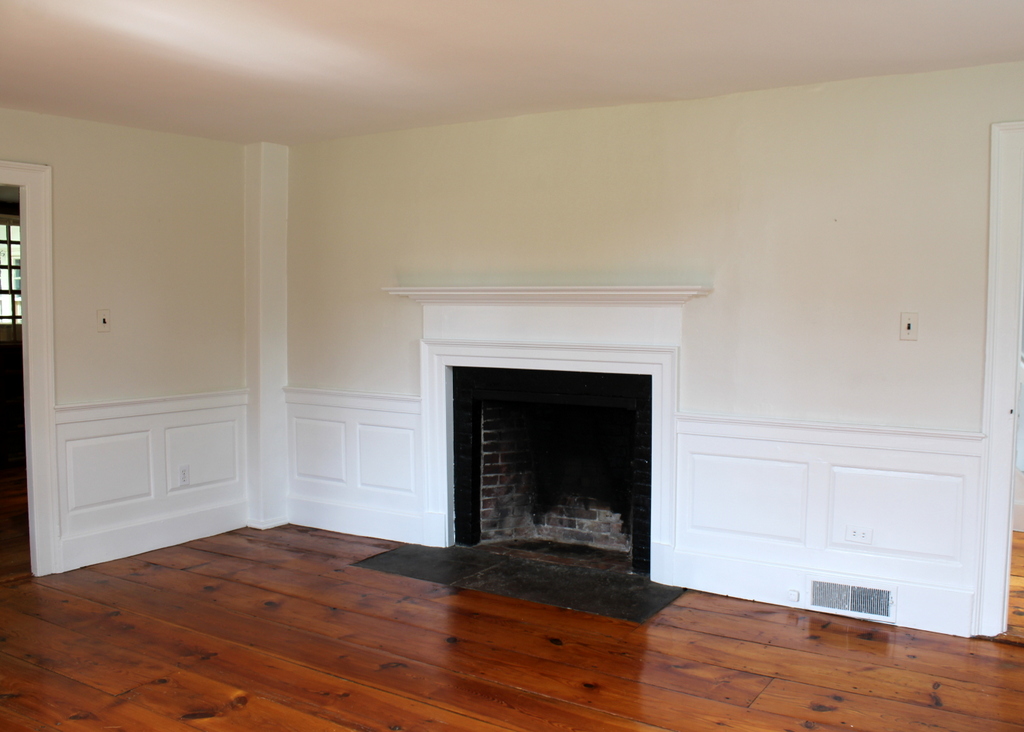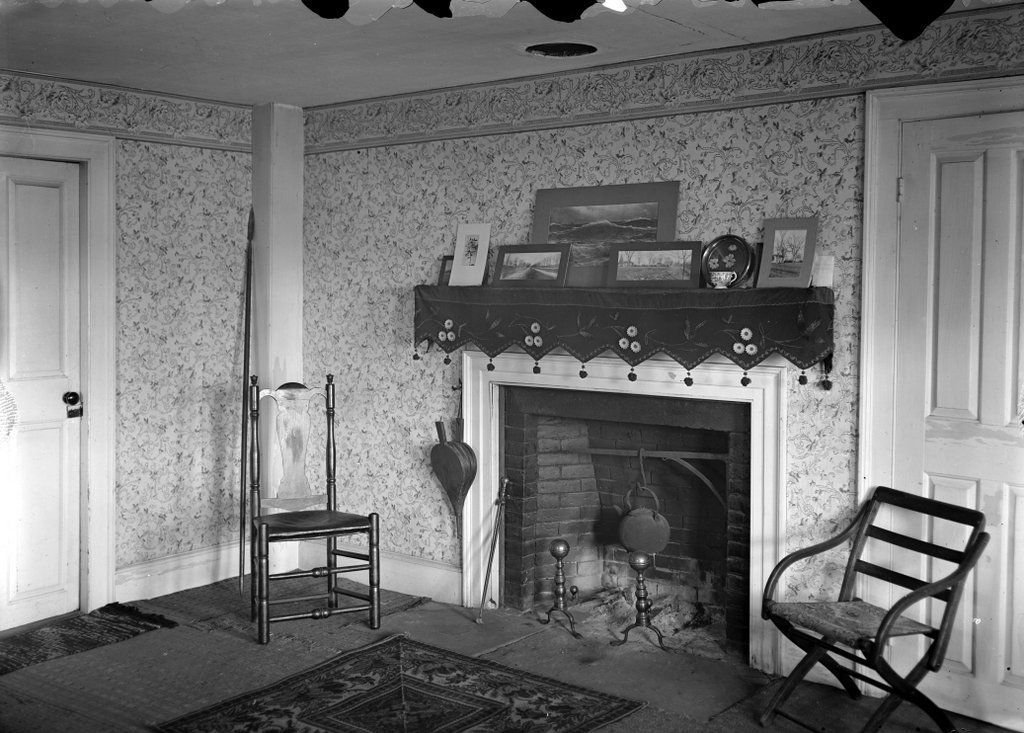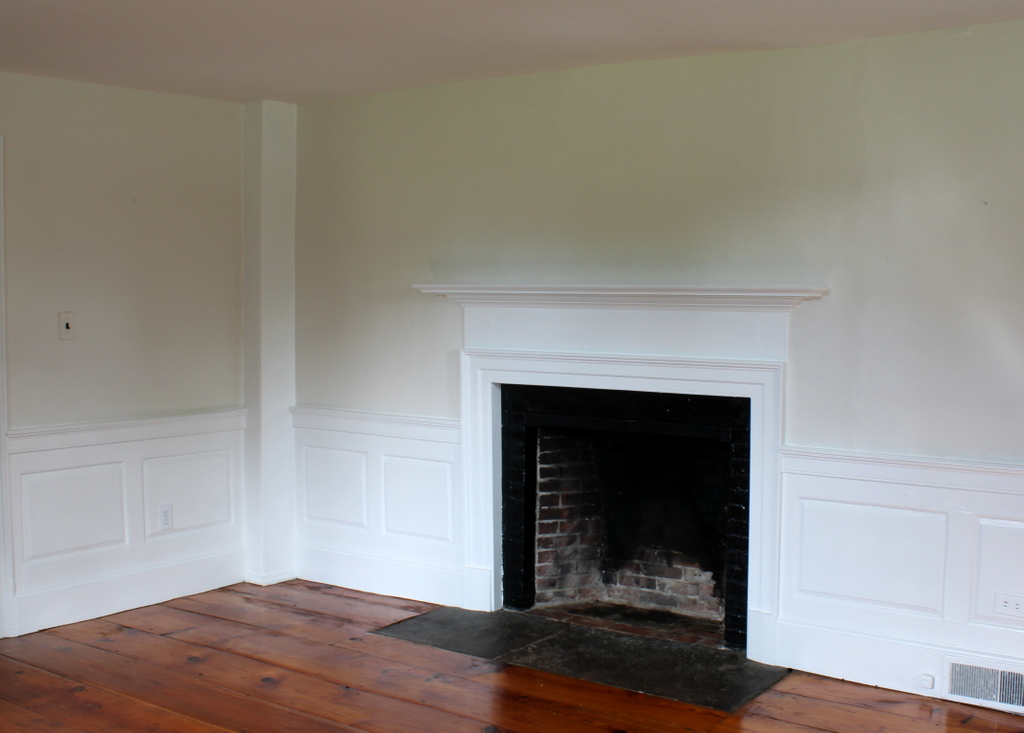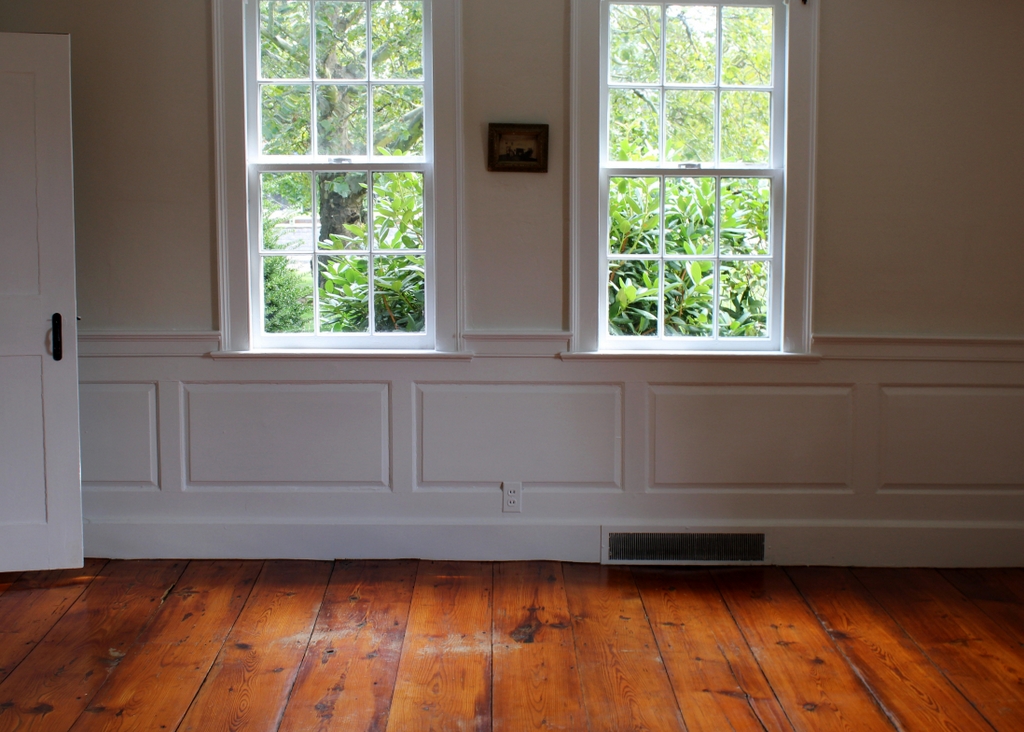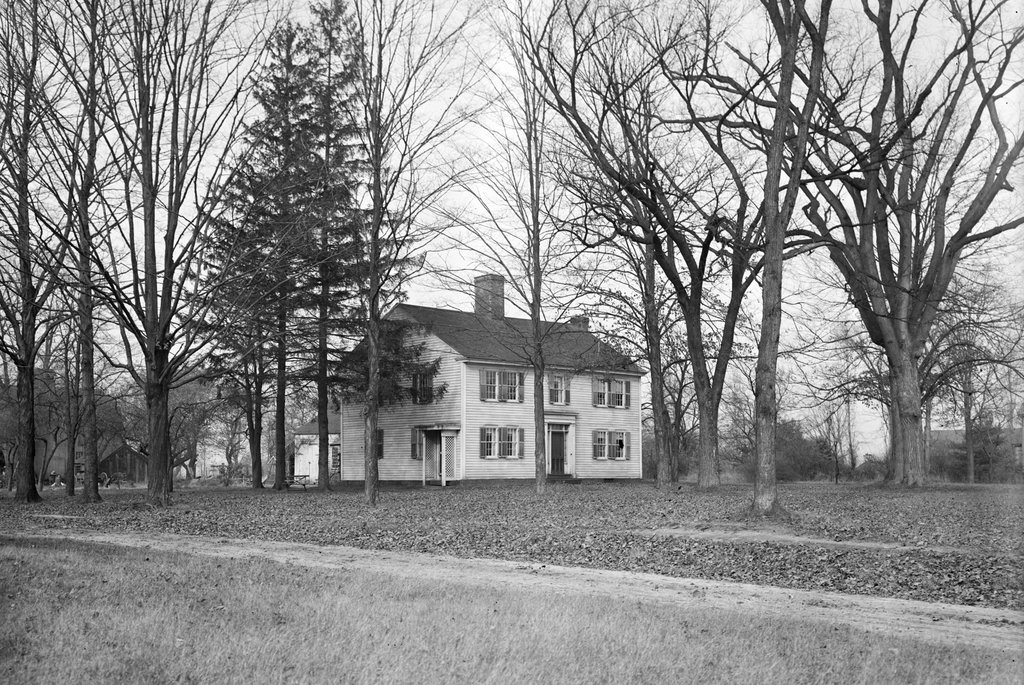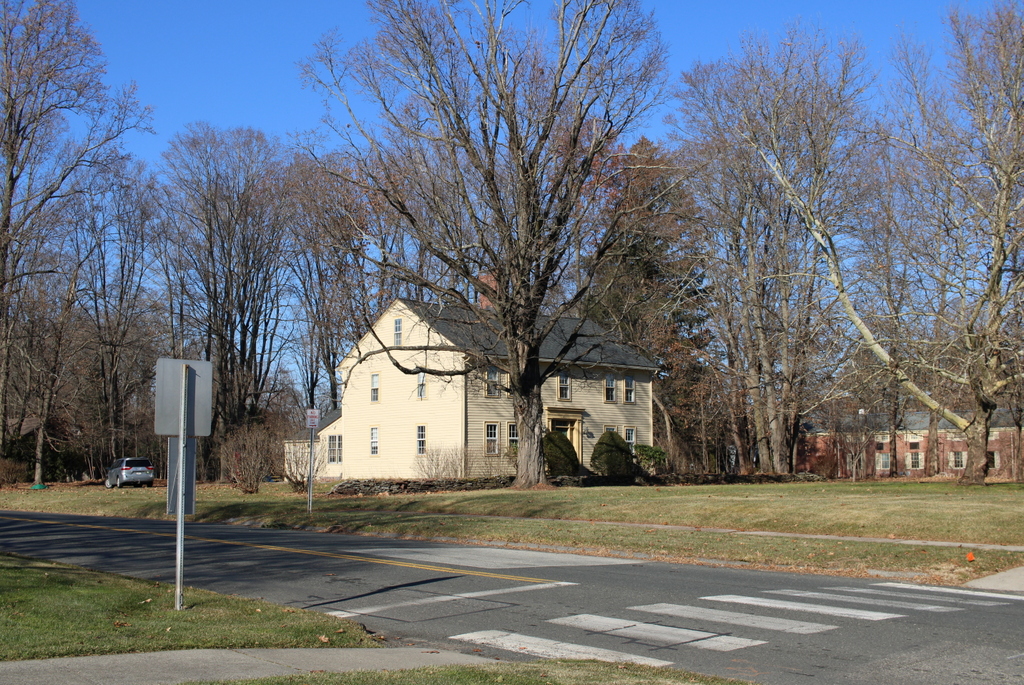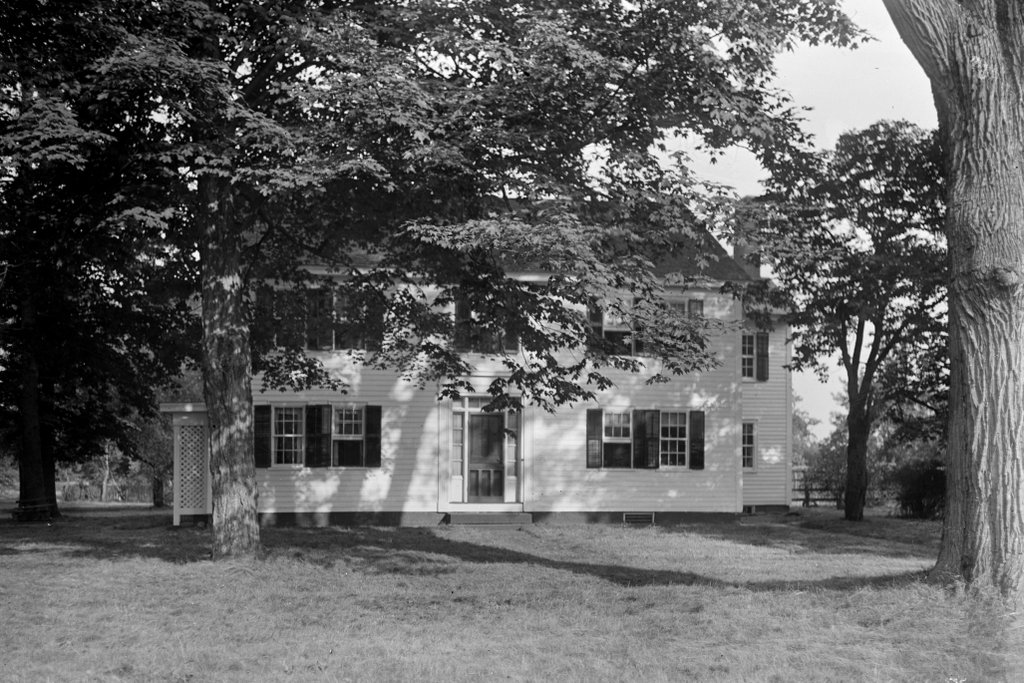A self portrait of photographer Paesiello Emerson, in the south parlor of his house in Longmeadow, in June 1916. Image courtesy of the Longmeadow Historical Society, Paesiello Emerson Collection.
The scene in 2023:
As with the previous post, these two photos show the south parlor of the Josiah Cooley house, a colonial-era home that was built around 1760 on Longmeadow Street in Longmeadow. The subject here in the first photo is Paesiello Emerson, an amateur photographer and retired boot manufacturer who moved here to this house in 1907 to live with his half siblings Annie and Henry Emerson.
Paesiello was originally from Hopkinton, but he later moved to Ashland and Spencer. He was a Civil War veteran, serving in the 5th Massachusetts Battery from 1863 to 1865, and he was wounded in battle in 1864, during the Overland Campaign in Virginia. Although his main occupation was as a boot manufacturer, he took up photography as a hobby around 1902, when he was about 70 years old. He continued this after his move to Longmeadow in 1907, eventually taking hundreds of high-quality photographs of the town during the 1910s and 1920s.
The first photo is a self portrait that Paesiello took here in his home. He was 84 years old at the time, but he was still living a very active life. Aside from his photography, he also enjoyed traveling, and in his later years he made long journeys to places like Bermuda, Panama, and California. He also regularly attended Civil War reunions, including one that he traveled to in Fairhaven, Massachusetts in 1927, when he was 95. The previous year, his family had tried to discourage him from attending that year’s reunion because of his advanced age. So, in 1927 he avoided potential confrontations by slipping out of the house without telling anyone. This prompted several missing person articles in newspapers, which expressed concern about his well-being. He successfully attended the event, and found the articles about himself to be amusing, but it proved to be his last reunion, because he died a few months later.
After Paesiello’s death, his sister Annie inherited his collection of photographs. She was the town’s leading historian of her era, and she had done extensive research on many homes in Longmeadow, including this one. Because of this, she likely recognized the historic value of her brother’s images, which captured scenes from the town during the time period when it was transitioning from a rural farming community into a busy suburb of Springfield. She subsequently donated the images, including the one here in this post, to the Longmeadow Historical Society, and they have since been digitized and made available online.
Annie died in 1941, followed by her brother Henry in 1943, and the house was later sold. At some point in the late 1940s or early 1950s it underwent a restoration, as shown in the second photo. This included reinstalling the original wainscoting here in the south parlor, which had been removed and taken upstairs during an early 19th century renovation. The mid-20th century work also involved moving the doorway further to the left. The door itself was removed, and the doorway was widened to about twice the width of a standard door, creating more of an open floor plan between these two rooms. As a result, one of the windows in the back of the house is partially visible on the left side of the scene. This window appears to be one of the original windows in the house, predating the later 6-over-6 windows that were installed in the front part of the house in the 1820s or 1830s.

